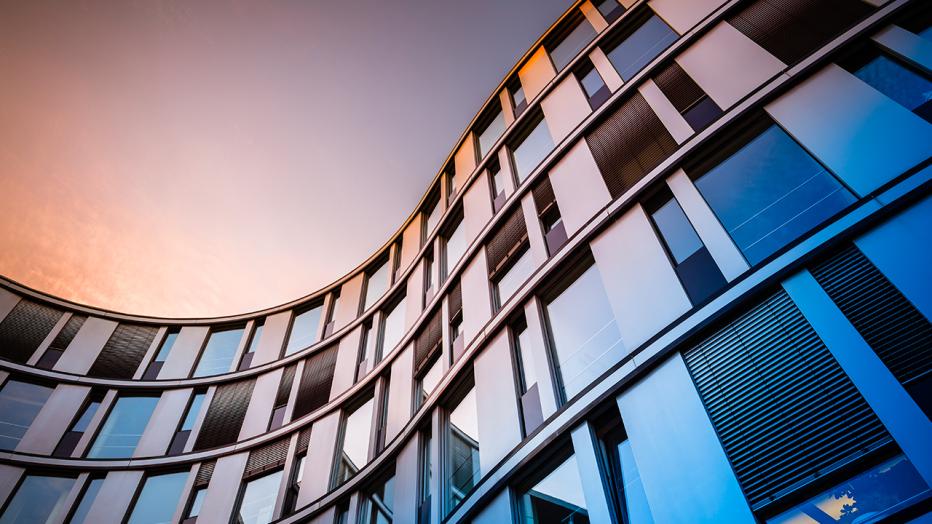
As we consider the myriad of COVID-19 impacts now, Jacobs’ technologists are busy addressing what it means next when shelter-in-place orders are lifted. The properties that sat vacant or underutilized for weeks or months may cause problems of their own:
- Stagnant water can create a favorable environment for pathogens including Legionella as well as lead release within the water supply.
- Buildings with stagnant or reduced ventilation could result in the accumulation of harmful pollutants.
- Uncontrolled humidity levels can create favorable conditions for mold growth.
- Dry sanitary sewer P-traps provide an unobstructed path for harmful vapors as well as airborne pathogens to enter the building.
Each of these issues can impact potable water and lower the quality of the indoor air – increasing risk for building occupants. Any underutilized building property including office buildings, schools, medical buildings, hotels and other public and private spaces is potentially impacted.
Jacobs’ water and built environment teams have not only identified this concern but have developed guidance documents for owners and managers of properties to help communities safely re-open and return to work and school.
“This is a public health issue that needs to be addressed and has the potential for public outcry if individuals re-entering buildings that have been vacant due to long periods of shutdown become ill from the water or air,” says Jacobs Global Vice President for Water Peter Nicol. “For example, Legionella can cause pneumonia and flu-like symptoms that could be confused with COVID-19.”
Building Water Systems (Download PDF)
The first of the guidance documents addresses potable water quality in buildings. Water utilities continue to safeguard the water quality delivered to consumers via the distribution system by maintaining water flows, disinfectant residuals (chlorine or chloramines) and by providing water quality that mitigates corrosion and release of metals in premise plumbing such as lead and copper, for example. Safeguarding water quality within the building water systems within these properties is more challenging as currently, these properties sit nearly empty due to stay-at-home advisories in response to the COVID-19 pandemic, meaning that the water demands have dropped significantly.
The result of prolonged stagnation (weeks or months) in the building water systems has the potential to deteriorate water quality, creating the risk of health-related issues explained in the guidance document. This impacts hot and cold potable water systems which are used for drinking and washing, tepid water systems for safety showers, and water used in utility systems for humidity control in HVAC systems or evaporative cooling applications such as cooling towers. Older buildings which are not designed in accordance with the latest building codes may have systems with higher risk. As an example, some buildings may contain hot potable water systems without recirculation which would leave these systems more vulnerable with lack of use.
Air Quality (Download PDF)
Many building HVAC systems, during periods of no or limited occupancy, have reduced or eliminated operations. During this period of reduced operation, outdoor air ventilation is also reduced, allowing indoor air pollution to concentrate from chemicals, including VOCs, which are released from indoor furnishings, carpets, building materials and cleaners. Humidity levels left uncontrolled can also contribute to mold growth. Each of these left uncorrected can negatively affect the respiratory systems of building occupants.
Consider also that occupants are protected from the harmful effects of the gases from sanitary waste systems by wetted P traps. The wetted traps provide a barrier that prevents fumes, vapors and contaminants from entering the building. During periods of little to no use, these traps have the potential to dry out leaving an unobstructed path for faecal droplet fumes, vapors and contaminants to escape into the building.
According to the World Health Organization (W.H.O.,) “It has been suggested that the ‘faecal droplet’ route may have been one of several modes of transmission in Hong Kong during the SARS outbreak in early 2003. In this case, droplets originating from virus-rich excreta in a given building’s drainage system re-entered into resident’s apartments via sewage and drainage systems where there were strong upward air flows, inadequate ‘traps’ and non-functional water seals.”
It is imperative that building owners and operators consult with experts, industry organizations, public health officials and onsite personnel, in deciding what steps need to be taken to address the possible health issues associated with underutilized buildings prior to re-entry. Corrective actions can be taken during building shutdowns to minimize the effect of the shut down, or recommissioning may be required before re-entry.
Jacobs’ guides also include considerations for addressing both water and air quality concerns prior to building re-entry. They also share the best practices available for testing, corrective actions and commissioning for idled buildings and building systems. The firm has practitioners well versed in these systems to aid building operators and owners in safely re-occupying underutilized buildings.
“As we navigate a new normal in the wake of COVID-19, we’re all learning new and important ways we can make a difference. It’s imperative that we raise awareness of this critical buildings health issue so that we can continue to protect public health and safeguard our future as we get back to work,” adds Jacobs Global Vice President for Built Environment Monte Wilson.
Contact:
For more information, contact:
Jacobs Global Building Systems Solutions Director Charles Funk
Jacobs Global Surface Water Technology Leader Jesus Garcia-Aleman
Related terms: COVID-19, COVID, Coronavirus












































